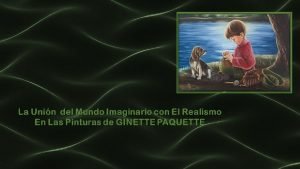Transient ConductionConvection Cody Paquette Casey Maranto Michael Thorpe

- Slides: 1

Transient Conduction-Convection Cody Paquette, Casey Maranto & Michael Thorpe Department of Chemical Engineering, University of New Hampshire Introduction Metal Objects Tested Results In the canning industry perishable canned foods are heated by immersion in steam baths or chilled by immersion in cold water. In this experiment, the temperature distribution from approximately 100°C water to approximately 0°C water was measured for aluminum and brass shapes Rectangle Cylinder Sphere Aluminum 16. 98 20. 04 20. 66 Brass - 18. 87 24. 97 Dimensions: Block: 6 x 2 x 1 in. Cylinders: D=2 in. H=6 in. Spheres: D=2 in. Heat transfer coefficients (W/m 2*K) of Aluminum and Brass objects without agitation. • Design Problem: Aluminum cans of cooked food must be cooled from 120 to 10. It is achieved by immersing the cans in a cold-water bath of 0. Determine the time required for each shaped can to reach the desired temperature Rectangle Cylinder Sphere Aluminum 79. 76 105. 84 115. 63 Brass - 106. 04 134. 16 Conclusion • The spherical object had the greatest heat transfer coefficient of the three objects used in the experiment. Heat transfer coefficients (W/m 2*K) of Aluminum and Brass objects with agitation. Methods 140 • The rectangular object had the lowest heat transfer coefficient. 0 Rectangle T vs t • Brass had a higher heat transfer coefficient for both shapes compared to aluminum. Cylinder T vs t Rectangle lnϴ vs t -0. 5 Cylinder lnϴ vs t • Agitating the system caused a significant increase in the heat transfer coefficient for both materials used. 100 -1 80 -1. 5 lnϴ Temperature (°C) • Brass and Aluminum shapes heated in hot water baths. • Natural convection studied on each shape from 100°C to 0°C using ice water bath • Forced convection studied for each shape from 100°C to 0°C using ice water bath agitated by Lightning Mixer at 300 RPM • Cooling profiles made using Lab. View computer program and Type T Thermocouples (± 1°C) for water baths, and Type K Thermocouples (± 2°C) for shapes. • Additional cooling profiles made using natural convection from 80°C and 60°C to 0°C, using the aluminum cylinder. 120 60 Design Problem Solution -2 40 -2. 5 20 . 0 -3 0 50 100 150 200 Time (s) 250 300 Time (s) Rectangle Cylinder Sphere 271. 0 328. 4 241. 3 350 Aluminum Cylinder and Rectangle Temperature vs Time and Log Temperature Difference vs Time, in seconds, for each Aluminum shaped container to reach 10 o. C based on each shape’s respective heat transfer coefficient.

